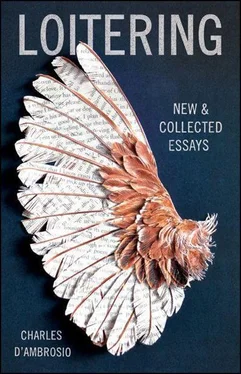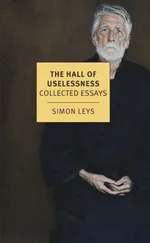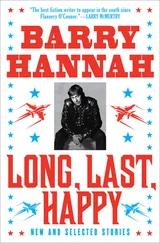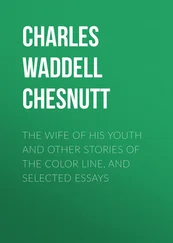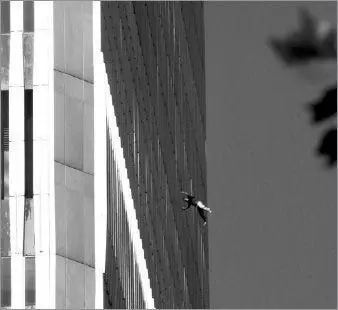
Whereas prison, well, what is it, really? A shortage of space compensated for by an excess of time.
— Joseph Brodsky
Brodsky’s equation is just, I think, but you can tinker with the terms and arrive at other prisons, other compensations. This picture also brings us to a prison, one without a shortage of space; in fact, there’s a sudden, horrifying excess, a terrible liberation, with time in short supply.
In this moment the falling man’s time on earth is a spatial concern, and he has more in common with a stapler than he does with you or me. Natural laws explain why he’s dropping, and a formula can easily calculate the rate of his descent. A man of roughly that weight, from roughly that height, in that specific gravity, arms and legs spread, reaches a terminal velocity of 125 mph, beyond which there’s no further acceleration. Terminal velocity — of the man, a stapler, a raindrop — is the square root of [(2 x W) / (Cd x r x A)]. 1That’s the irresolvable contradiction in this picture, a man subject to mechanistic forces, a life obedient to an indifference — although obedient is a somewhat dead metaphor here, since rebellion or refusal is impossible. One might wonder if he jumped or not, a last act of volition, a final insistence on self, but either way falling is the consequence. In falling, he’s lost connection, he’s ripped free from every relation, to his love and work and family, to his own biography, to the choice he made that morning about what shirt to wear. The descent strips him of every cherished thing, even our regard, and one thinks of Auden’s Old Masters who understood the position of human suffering, “how it takes place/While someone else is eating or opening a window or just walking dully along,” and the amazing boy from Breughel, falling out of the sky, seen by a ship that “had somewhere to get to and sailed calmly on.” The falling man is falling because that’s what things do, and in some awful way it’s not remarkable.
Just the same, there’s an abstract purity to the picture, in the geometry of sky and building, that strangely suspends the man in a constructed space, entirely drained of time, so that one imagines him there forever. The composition is immaculate, even icily harmonious. In the picture’s arrested moment you get a pure feel for the falling man’s incomprehension, his emptiness, but in the days following the attack, obviously, this sensation would become intolerable to survivors, to the witnesses we were turned into, and the point of view would shift, the images would progress. Something was needed to distinguish the falling man from a fluttering scrap of paper, from the nothing of his silent descent. The pristine space began to blow with dust and fill with debris. Attention was focused on the broken hierarchy, the jumbled ruin. An accessible idea of heroism, Homeric but not tragic, occupied the human void, and suddenly firemen loomed up and moved across the foreground of the new images. “The savagery of the struggle for existence,” Miłosz has written, “is not averted in civilization,” and now we knew this, possibly. But a hasty gloss of evolution from primitive to modern was improvised, phoenixlike, out of the ashes, and contra the terrorists, who seemed to have reduced a symbol of at least one kind of civilized aspiration to a barbaric rubble. Rebuilding began in a rudimental, dark, superstitious state where blind luck or chance either saved or did not save. Later, it turned out that God was with the people who survived and the people who perished were now with God, a tautological tidiness that always breaks my heart, tearing at an old longing for universal justice. Faces were shown, names mentioned, chronologies elaborated, stories told, helping to rehabilitate the present scene, applying a patch to the moral sense. An ideal civitas emerged, so that, looking into the shadowy precincts of Wall Street, where certainly some of the dead were embezzlers, no mention was made of precisely the sort of intrigants who would, later, populate stories about Enron. It’s almost too obvious to state, but in a random sample of any three thousand people, some will be beating their children, others will be addicted to heroin, and others still will be caught in the midst of affairs that would, left to run their course, damage families and undo to some degree the social fabric. But this was a new polis — from which those folks were now symbolically banished. Sincerity worked like a conduit for connection. What might have been viewed as a great equalizer, falling on the just and unjust alike, visited on the rich and the poor, the fair and the homely, black and white, instead rose out of the wreckage with a perfectly familiar face, looking quite the same as life before. Hierarchy was restored, and hatred with it. Enemies were declared, war was in the offing, and now the falling man, not knowing what he’d done, was descending through — or perhaps into — the medium of history, which sits between all of us and oblivion.
There has been considerable reflection on the origins of the phenomenon known as individualism, on Byronic despair — the revolt of the individual who considers himself the center of all things, and their sole judge. No doubt, it was the contents of the imagination itself which forced this to happen, as soon as hierarchical space began to somersault . Anyone who looks into himself can reproduce the course of the crisis. The imagination will not tolerate dispersal and chaos, without maintaining one Place to which all others are related, and, when confronted with an infinity of relationships, always relative only to each other, it seizes upon its sole support, the ego. So why not think of myself as an ideal, incorporeal observer suspended above the turning earth ? [Italics mine.]
— Czesław Miłosz
Hatred organizes space — think of Dante’s Inferno , the structure of which is partly animated by personal enmity — and in the gray waste of the Philipsburg in Hugo’s poem, it’s the principal supporting business. The contracted, hating ego restores hierarchy, creating an armature for the emotions, organizing a defense of the inner life while it’s attacked from outside. But hate and rage are emotions we summon to survive a crisis, and the acute phase can’t be sustained for long. The adrenal medulla can’t hack it. The surge of epinephrine is meant to peak and subside and pass entirely with the passing of the injury or threat. Without relief the nerves blunt, and even if the emergency remains, a numbing settles in obdurately; and that’s the harmed, sinking, downward passage, from hatred to boredom, captured in the second stanza of the poem. Hugo moves in a quick line or two from rage and hatred to boredom, and I think he’s right to push the association. Here, the hatred is against history, the mere unfolding of life, its indifferent or brutal or oblivious progress, against which the spiked rage can’t strike out. It’s a grievance against ghosts, a grievance against what’s gone — or even, more accurately, against the sheer “going” of life everyone suffers. No wonder that in these ruined Western towns you so often find revivals along the lines of Hawthorne’s legend prolonging itself, the sorry romance of the spurned, yearning to occupy the dramatic center once more by suspending time. The main drag in Philipsburg is either ruined or vacant or shabby or somewhat tartly gussied up, but these are all guises of the same settled arrangement, the same hierarchy. Hatred’s destination is boredom, and boredom is perhaps a rebellion against time; it’s the finished putting up a fight with the end. Boredom is, at any rate, a more habitable space, long-term, than history.
Читать дальше
